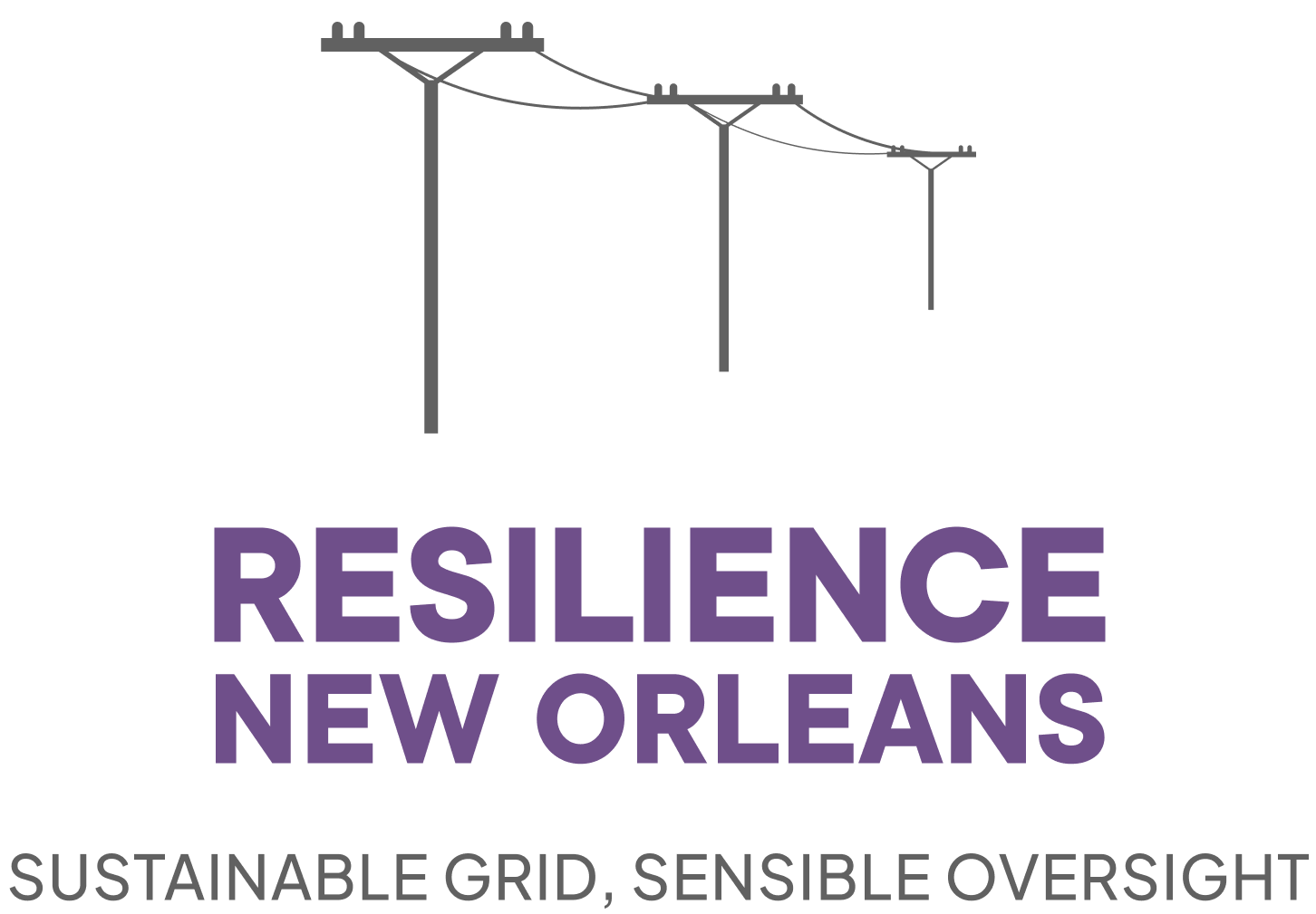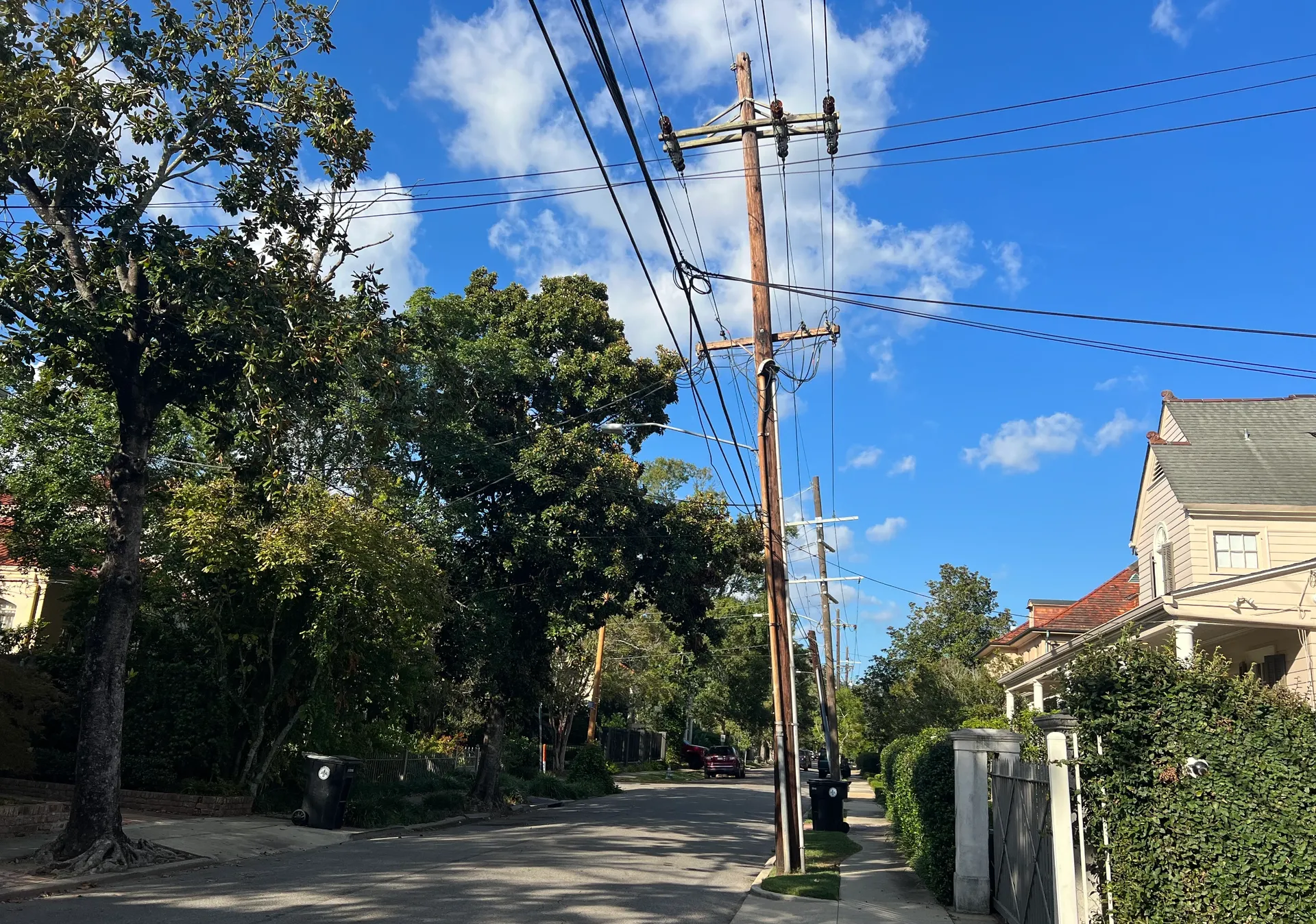At a recent meeting of the City Council, members discussed upgrading our local electricity grid to be more storm-resistant and improve reliability. Councilmembers were unanimous in the opinion that New Orleans needs an upgrade, but got bogged down on the total cost rather than the specific line items of the plan. No one asked the utility why we needed to switch out wooden utility poles, but that is a critical part of this proposed $1 billion-dollar resiliency plan. Let me explain…
What’s in a Utility Pole?
Throughout New Orleans, wooden utility poles dot our tree-covered cityscape, holding up the lines that bring electricity to our homes and businesses. The poles reach about 30 feet high with cross slats at the top. The technology behind these wooden utility poles has stayed the same for around 100 years.
Above ground, the poles fade into the regular sights and are generally ignored. Below ground, they are a veritable buffet for Formosan termites, who eventually find their way through the toxic outer perimeter of the pole. You see, wooden poles are relatively cheap and easy to transport; hence, make a cost-effective choice when they can last. They are soaked in toxic chemicals like Penta, arsenic, or creosote to extend the pole’s life. Longer-lasting poles save money on the electric bill, but the cost to other communities is high.
(Side note about termites: not only do they plague us in May during the terrifying swarm and threaten our houses, but they also chew through electric cable insulation, causing damage and costly power outages.)
Termites are not the only pest. The beautiful pileated woodpecker is a relentless foe of wooden utility poles. They peck and peck away at them for food or nesting. One theory is that the electricity creates a hum that vibrates through the wood, mimicking insect activity. Determined woodpeckers pound hole after hole, hopelessly compromising the utility pole’s structural integrity. Whenever I see a woodpecker zealously going after a utility pole, I feel sorry for it. And us. It is a terrible trick of modernity on nature and vice versa.
In the past, we had no other pole options; wood was it. Now, there are three other types of utility poles to choose from: steel, concrete, and composite. Steel is popular for heavier lines because it is strong and doesn’t burn but is a great conductor. Concrete is heavy to transport but is more resistant to storms and pests. Composite poles are the newest technology, solving age-old issues around weight, storm risks, and edibleness. Comprised of fiberglass and epoxy, then encased in thermoplastic, composite poles are extremely strong. Concrete and composite poles are inert, meaning they don’t leak toxic chemicals into our soil.
Choosing the best pole to hold electricity wires is a critical consideration, and local conditions determine the right choice because the pole is the base of our grid infrastructure. Mexico’s national utility – la Comision Federal de Electricidad (CFO) – installed a composite pole every fifth pole in the Baja Peninsula to strengthen its distribution system. After Hurricane Odile blew across Baja with 125 mph winds, the composite poles were the only ones left standing. When one pole fails, a neighborhood goes dark. When several fail, it is a severe economic hit.
As we look towards building a more reliable and safer electric grid, accounting for our specific vulnerabilities can guide us towards choices that ensure the longevity of utility poles and protect the environment and the well-being of our community. New Orleans can overcome our reliability challenges by embracing innovation and sustainability, ensuring our electric infrastructure stands firm against the tests of nature and time. At the very least, we should pull up the buffet line and stop feeding the termites!
To take a deep dive into composite poles and how they compare to wood, click here.

